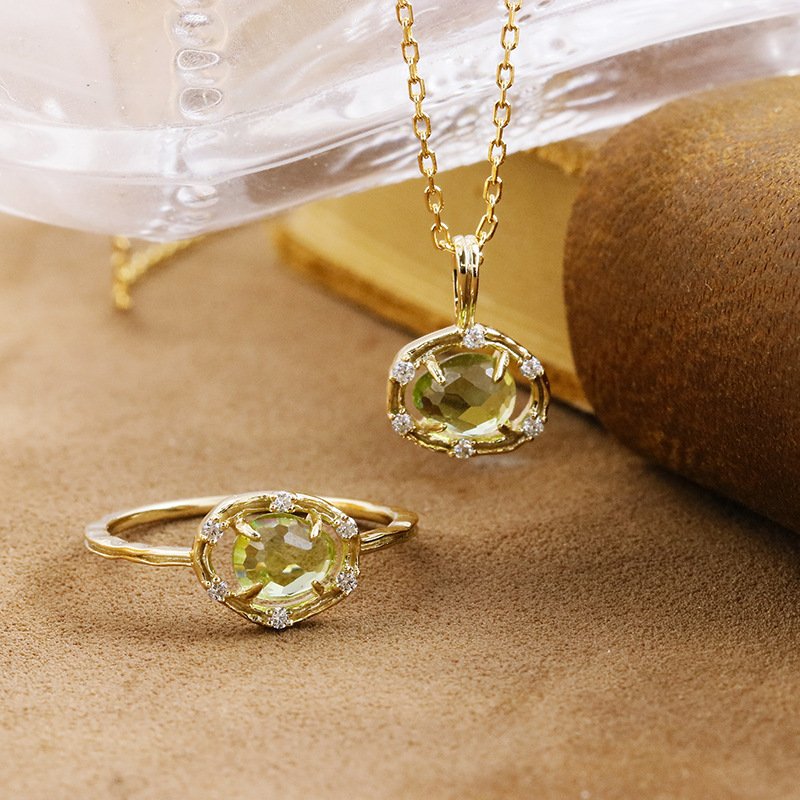Emerald, the May birthstone, is one of the most captivating gemstones, known for its lush green hue and rich history. Emerald, the 55th wedding anniversary token, symbolizing spring, life and vitality, peace and happiness. It is also known as the “King of Green Gemstones” because of its magnificent and pure color. No matter day or night, no matter sunny or cloudy, its green color is incomparable to other gemstones.
1. The Legends and Origins of May Birthstone Emerald
There’s even a legend that the Holy Grail, used by Jesus at the Last Supper, was carved from emerald. In ancient Greece, emeralds were cherished as precious offerings to Venus, the goddess of love and beauty. Thousands of years ago, both the Egyptians and Greeks adored emeralds, using them to craft stunning jewelry. The Chinese, too, have long held a deep love for emeralds. During the Ming and Qing dynasties, emperors especially favored them, leading to the saying, “The ceremonial crown must include cat’s eye and emeralds.”
In fact, the name “emerald” originates from the Persian word “Zumurud,” which means “green gemstone.” Over time, it evolved into the Latin word “Smaragdus,” and later the English word “Emerald.”
In ancient times, emeralds were believed to possess extraordinary qualities that could enhance a person’s character. It was said that those who owned an emerald had supernatural abilities to foresee the future, along with enhanced memory and debating skills. These qualities were thought to make the owner quick-witted, more loyal, and able to ward off illness. Some even believed that emeralds could transform wasteful individuals into frugal ones, thereby bringing them greater wealth.
2. Sources of May Birthstone Emerald
Emerald is the most prestigious member of the beryl family, alongside other colorful gemstones like aquamarine and morganite, forming a vibrant gemstone family. The largest known carved emerald in existence today is a mysterious and noble Colombian emerald from the Mughal Empire period of India, weighing an astonishing 217.8 carats, and it is housed in the National Museum of Qatar.
Colombia is renowned as the primary source of high-quality emeralds, but they are also found in other regions such as Russia, Brazil, India, Tanzania, and Zambia.
3. Red Carpet and Celebrities
The vivid, clear green hue of emeralds has made many celebrities fall in love with this gemstone. Its noble and elegant aura also makes emeralds a frequent choice on the red carpet.
Elizabeth Taylor, the iconic queen of jewelry, was often seen wearing emerald pieces in countless appearances, showcasing some of the most renowned emerald jewelry in the world.
Angelina Jolie is perhaps one of the most devoted fans of emeralds. At various award ceremonies, she often opts for the simplest outfits, perfectly complemented by emerald jewelry, creating a stunning and harmonious look.
With its endless charm, emerald has become the secret weapon for celebrities and socialites to captivate attention at grand events. Undoubtedly, in the world of gemstones, emerald reigns as the superstar adored by all.
4. Evaluation and Validation
Emeralds are usually evaluated for color, clarity, cut, and weight.
- Color: The distribution of color should be even, without impurities, and the ideal color is a pure medium to deep green (neither too blue nor too yellow).
- Clarity: The fewer internal inclusions, cracks, or flaws, the better. The surface should also be free from scratches.
- Cut: The cut must be well-proportioned, with symmetrical and neatly polished facets.
- Carat Weight: Measured in carats, the larger the carat weight, the rarer and more valuable the emerald becomes.
Emeralds typically exhibit a glassy luster and range from light to deep green, sometimes with blue-green or yellow-green tones. They also display moderate to strong pleochroism. Key gemological characteristics that distinguish emeralds from similar gemstones (such as jade, chrome diopside, and green garnet) include:
- Refractive Index: 1.577–1.583
- Mohs Hardness: 7.5–8
- Specific Gravity: 2.72
In addition, their color (hue and saturation), structure, and internal inclusions differ significantly from those of other similar gems, making these factors important in gem identification.
Of course, there are also synthetic emeralds. The most notable difference between synthetic and natural emeralds lies in their inclusions. Natural emeralds contain a variety of mineral inclusions, while synthetic emeralds may show distinct characteristics depending on the method of synthesis:
- Hydrothermal Method: May display nail-like inclusions.
- Flux Growth Method: Can contain flux inclusions, remnants from the synthesis process.
These differences in inclusions are key indicators gemologists use to distinguish between natural and synthetic emeralds.
Additionally, under both long-wave and short-wave ultraviolet light, synthetic emeralds exhibit a stronger fluorescence compared to natural emeralds, typically glowing a vivid red. This distinct fluorescence is another important characteristic used to differentiate synthetic emeralds from their natural counterparts.
5. Caring for Emerald
Emeralds, like tourmaline and rubies, fall into the category of “ten gems, nine of which have flaws.” They typically contain fissures, and to enhance their natural beauty and increase their value, some emeralds with numerous inclusions are treated with colorless oil. This optimization method is widely accepted by both sellers and consumers.
Due to the brittleness of emeralds and their sensitivity to high temperatures, it is essential to handle and store them with care. Additionally, emerald jewelry should not be cleaned using ultrasonic cleaners, as this can damage the stone.
6. Conclusion
“Trees blend with the evening shade, while the pool cools with morning freshness.” In this transitional season of spring and summer in May, emeralds resonate beautifully with the natural scenery. Whether strolling through the park or rushing along the roadside, the swaying branches seem to hang with shimmering emerald leaves, providing a sense of coolness while evoking feelings of tranquility and hope. It is this enchanting green that makes emeralds so endearing, capturing the admiration and love of people around the world.
To explore more about birthstones, please refer to Uncover the Hidden Magic of Birthstone with Months: Ancient Wisdom.









